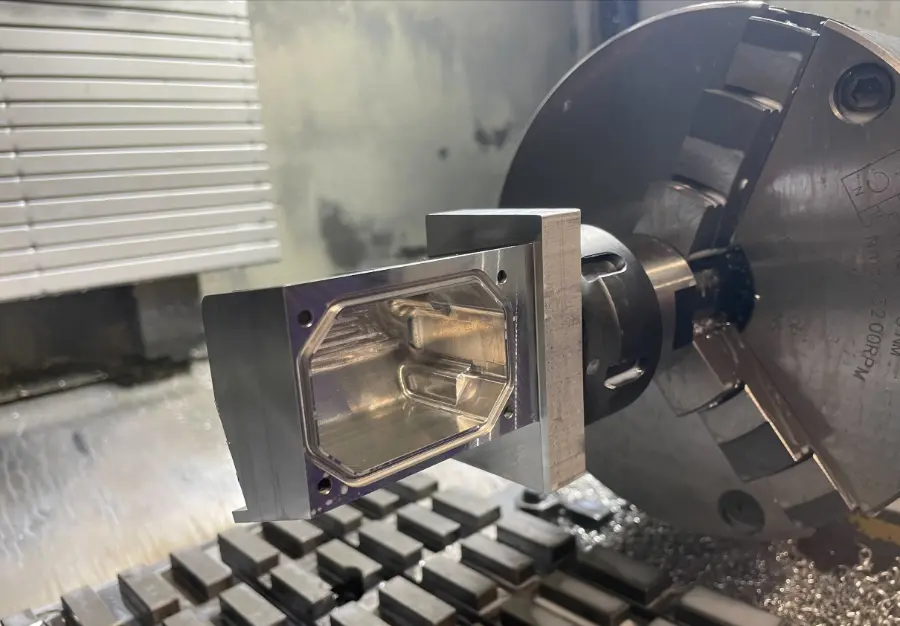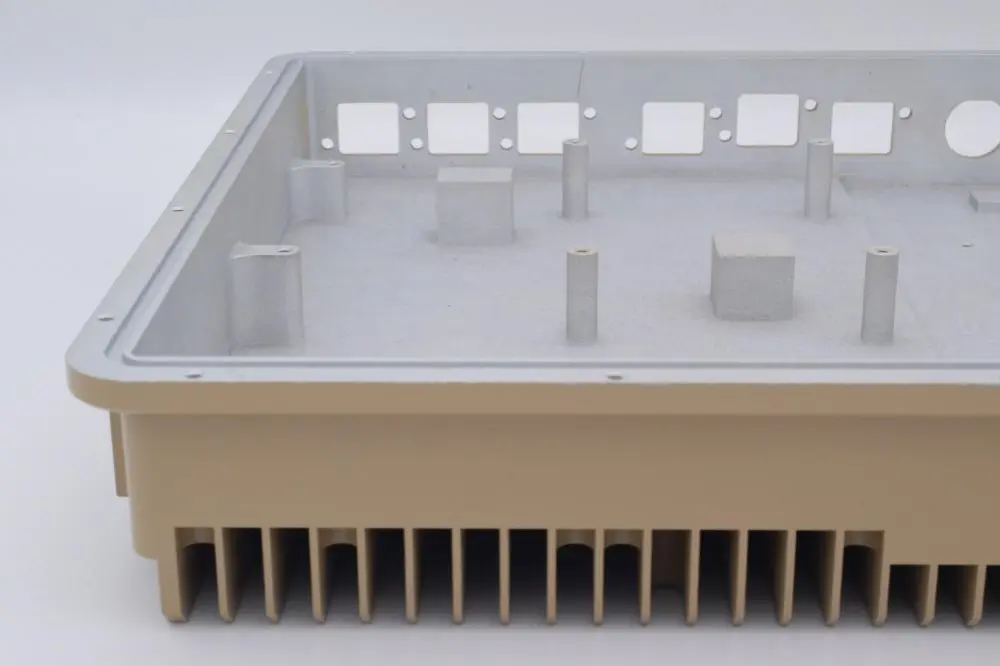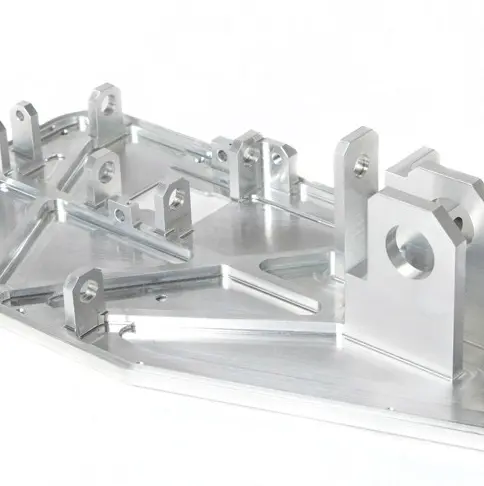 Get a quote
Get a quote
In some cases, waterproofing isn’t necessary. In others, it’s not enough and what you actually need to design is a watertight enclosure.
To understand the distinction between waterproof and watertight, it can be useful to look at IP ratings.
IP is the Ingress (or International) Protection Marking System – the generally accepted system for grading the protection against foreign bodies (liquids and solids) of electronic housings.
IP ratings consist of two numbers e.g. IP65. The first number denotes the protection against solid foreign bodies (such as dust) and the second number refers to protection against liquids (such as water).
The first number ranges from 0 – no protection against solids/dust to 6 – full protection against dust.
The second number ranges from 0 - no protection against ingress of water to 8 – protected against submersion for long periods, and 9 – protection against high-pressure, high-temperature water jets.
This video gives a good overview of the IP rating system:
For reference, here is a breakdown of the IP ratings.
The IP ratings that are generally considered waterproof are IP65, IP66 and IP67.
An IP rating of IP68 would be submersion-proof at a depth of over one metre for prolonged periods of time. This would generally not be needed for enclosures that need to be waterproof or weatherproof, only watertight.
You can find out more information on designing watertight components and enclosures on our blog Machining design tips for marine technology.
The application of your enclosure will determine what level of protection against water, if any, is required. You can use the IP rating system to consider what level of protection is most suitable.
Certainly, if your electrical enclosure is going to be outside, you would need it to conform to a minimum IP rating of IP65.
This table outlines the liquid ingress protection and the correlating testing method:

There are several manufacturing methods that are suitable for waterproof enclosure production including CNC machining – usually CNC milling, 3D printing, injection moulding and sheet metal fabrication.
If you’re still at the ‘weighing-up’ stage, read our article Which manufacturing method is best for enclosures?
If you’ve decided on CNC machining, you’ll know that it’s great for producing enclosures with superior accuracy and tight tolerances.

CNC machining can also be very cost and time-efficient with great repeatability potential. It has a reputation for producing parts of superior quality and is able to offer a wide range of materials.
If you’re ready to start or even finalise your waterproof enclosure design for CNC machining, you’re in the right place.
If you’re ready to explore CNC machining suppliers for your enclosure project, here at Penta Precision, we have a highly experienced team of machinists. Find out more about our enclosure machining service.
Want to talk to a real person about your project? Get in touch with Penta
There are several considerations when it comes to material selection for CNC machined waterproof enclosures. The main ones are:
It’s a fine balancing act of finding a material that has the properties you desire for the best price and quickest lead time for your waterproof enclosure.
A material that is tricky to machine could have cost, quality and lead time implications.

Fortunately, there are plenty of options when it comes to waterproof materials for your enclosure. Let’s dive in…
Certain grades of stainless steel are highly corrosion resistant as well as other desirable characteristics such as good heat resistance, toughness, and durability.
The majority of stainless-steel alloys contain 15-20% chromium which oxidises to form a layer of chromium oxide on the surface of the stainless steel. This provides a protective layer against oxygen which would otherwise corrode the steel.
Stainless steel 304 and 316 are very commonly used grades for waterproof enclosures due to their superior corrosion resistance, with 316 offering slightly better protection thanks to the addition of molybdenum which does make it a little pricier.
Aluminium is the most common material used for enclosures and generally has excellent corrosion resistance.
Whilst not as durable as stainless steel, it offers a great strength-to-weight ratio, is highly machinable, and usually cheaper.

Unlike other metals, aluminium forms its own protective coating through oxidisation.
A common finishing treatment for aluminium is anodising which allows the aluminium surface to form thicker layers of aluminium oxide under controlled conditions, giving superior corrosion resistance as well as a more ‘clean’ and aesthetically pleasing finish.
Grades of corrosion-resistant aluminium that we frequently work with are 6082 and 5083.
Although less common for enclosures, copper does offer good to excellent corrosion resistance. C101, aka 99.9% pure copper, is widely used in electronics components due to its excellent conductivity.
Other notable properties include high impact strength, high ductility, and very good thermal conductivity.
Perhaps the main reason why copper is not at the top of every list for waterproof enclosures is because, relative to other metals, it is considerably more expensive. The price is also known to fluctuate so quotes are generally only valid for one week.
Another drawback is the challenge it presents to machine which means an experienced machinist is essential.
Plastics have abundant corrosion resistance required for most waterproof enclosures. They are, however, not usually as strong so may not be suitable for all applications.
Another drawback of plastics are that they are notoriously difficult to machine. You do therefore need to ensure you use an experienced plastics specialist machining company.
One particular plastic that we recommend for machined waterproof enclosures is acetal. This engineering plastic is renowned for being amongst the strongest and stiffest of all thermoplastics. It is also amongst the easiest plastic to machine and is known for its low moisture absorption.
The Acetal Homopolymer brand Delrin® is more expensive than acetal copolymers but does have some properties that make it more suitable for highly regulated industries.
Choosing a material for your waterproof enclosure is possibly the biggest decision you will need to make. We always recommend speaking to an experienced CNC machining company who can help you strike the right balance between required properties, cost and availability of materials and machinability.
Need help with material selection? Get in touch with Penta
When designing an outdoor enclosure for electronics, it’s vital to integrate waterproofing features into the design from the get-go.
In this section, we will take you through our top tips for waterproof enclosure design.
The most important feature of a weatherproof enclosure is undoubtedly the seal. The are several approaches you can choose.
O-rings are the most common seal design feature. They are circular rings which come in all different sizes.
When denoting the size, there are two numbers, one for the internal diameter and one for the external diameter.

There are two types of o-rings, static and dynamic:
A static o-ring is a good choice where the lid and base of your enclosure will be mated most of the time.
When designing your enclosure with a static o-ring seal, you’ll need to design a groove where the lid and base will meet and where the o-ring will sit.
The two variables you’ll need to calculate are the required size of the o-ring and the width of the groove.
To calculate what size o-ring you require, you will need to calculate either the internal diameter (for a round seal) or the internal perimeter (for a non-round seal) of the groove.
Once you have this number, you will be able to choose the o-ring size.
Please note you will always need a smaller o-ring than the diameter to account for stretch, so you can expect your o-ring internal diameter to be one to five percent smaller than the groove internal diameter for a good tight fit.
For the width of the groove, you can calculate this using the cross-sectional diameter of the o-ring which is based on the tolerance of the surface you’re sealing against.
For a seal to be achieved, the o-ring will need to be compressed between 10 and 40 percent.
Dynamic o-rings are very similar to static o-rings but they help to form a seal between moving parts using less compression (10 to 30 percent) and more lubrication.
Because a dynamic o-ring is continuously moving, you will need to use a tougher material and ensure the surface finish is non-abrasive.
You will also need to bear in mind that dynamic o-rings will be open to greater wear and tear than static o-rings and therefore more regular checking, maintenance and replacement will be required.
A nitrile or neoprene gasket is another sealing option for waterproof enclosures. Gaskets are most applicable to complex face-to-face seals, particularly with multiple cavities.
Similarly to o-rings, you will need to consider the compression required for your application and gasket thickness based on the tolerances of the lid and the base.
Unlike o-rings, gaskets are generally custom made and therefore you can design a gasket to your exact needs.
As you can well imagine, tolerances are key to achieving a waterproof design.
Effective waterproof enclosure design is about cleverly designed mating parts, perfectly executed.
Thus, the tighter the tolerance of the mating parts, the higher the protection against the elements.

When an enclosure needs to be waterproof or weatherproof, the mating faces and usually the groove should have what we call a ‘good machined’ surface finish of Ra0.8µm or better. This will stop water from getting into the machining marks and getting past the o-ring.
Need machining design advice for your waterproof enclosure? Get in touch with Penta
When designing your enclosure, it’s a good idea to have several prototyping rounds.
In the earlier stages, you may choose to use a lower-grade (and therefore cheaper) material.
At some stage in your prototyping process, you will need to use the exact materials intended for your final enclosure to conduct waterproof testing.
For best results and certainly if you require an IP rating for your waterproof electronics enclosure, you can use a dedicated IP testing company. They will have the necessary specialist equipment and expertise.
You will want to ensure that IP testing is carried out to the British standard BS EN 60529:1992. For Europe it will need to be IEC standard 60509:1989 and internationally should conform to EN 60529.
Any finishing processes will rely largely on the material selected.
Chromic acid anodising, hard anodising and sulphuric acid anodising all give an additional layer of corrosion resistance to aluminium as well as offering other properties such as improving adhesion and bond strength, heat resistance or electrical insulation.
Anodising is also known for producing a more aesthetically pleasing finished component.

Powder coating is a dry finishing process used largely for stainless steel where an electric charge causes a dry powder to fuse to the surface of the metal. It is then cured to achieve the final finish.
Powder-coated stainless steel is highly corrosion-resistant. Powder-coating has the additional benefit of opening up a vast array of colours for your waterproof enclosure.
It is worth noting that powder coating does add thickness to the machined structure so this needs to be factored in when specifying tolerances.

Designing a waterproof enclosure for CNC machining is a meticulous process that demands a profound understanding of materials, precise engineering, and unwavering commitment to quality.
In this guide, we’ve covered the fundamental considerations, from distinguishing between waterproof and watertight designs to selecting the ideal materials for your application. We’ve explored critical design tips including those around seals, tolerances, and surface finish.
By adhering to these principles and leveraging the capabilities of CNC machining, you can create a waterproof enclosure that not only protects the equipment inside but also enhances its performance and longevity.
Sometimes nothing beats being able to pick the brain of an expert in their field. Finding a trusted CNC machining supplier who has considerable experience in machining waterproof enclosures and can offer machining design advice is priceless.
Here at Penta Precision, we are passionate about all things CNC machining. We have a wealth of experience in machining waterproof enclosures. We can offer machining design advice as well as consult on design for manufacture.
You can give us a call on 023 9266 8334 to chat through your project, email us at <sales-email>, or complete the form below for a no-obligation CNC machining quote.

Whether you’re working on aerospace components, medical devices or industrial parts, knowing when to use a chamfer vs bevel edge can streamline production and improve part quality.

Exploring some common issues that may have arisen with your once reliable, existing CNC machining supplier. From quality and consistency concerns to communication gaps and inflexible approaches, we shed light on the signs that indicate it might be time to consider a new supplier. We delve into the reasons behind these frustrations and help you navigate the process of finding a more reliable CNC machining partner.